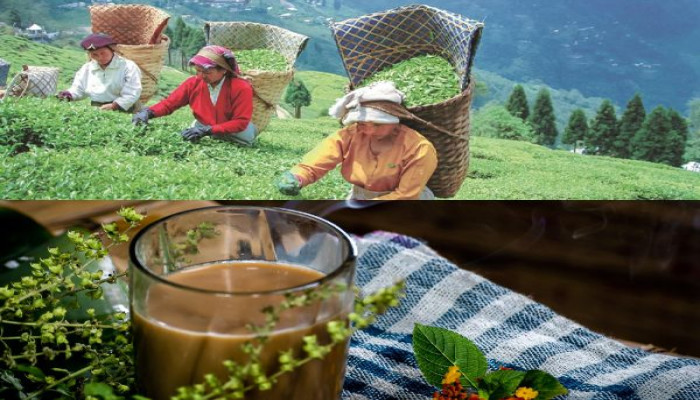Iran, Iraq drive India’s tea exports as demand from Russia declines
- In Reports
- 07:41 PM, Oct 22, 2025
- Myind Staff
Iran and Iraq have become the main markets supporting India’s tea exports this year. In the first eight months of 2025, both countries helped balance the decline in demand from traditional markets such as Russia.
According to the latest data from the Tea Board of India, Iraq bought the largest share of Indian tea between January and August, purchasing 35.94 million kilograms compared to 30.99 million kilograms during the same period last year. Exports to Iran also increased slightly to 6.39 million kilograms from 6.30 million kilograms a year ago. Exporters said most of the tea meant for Iran was shipped through Dubai, which remains the biggest trading hub for the region.
Exports to the United Arab Emirates also saw steady growth, rising to 31.23 million kilograms during January to August 2025, compared to 28.22 million kilograms in the same period of 2024. Industry estimates showed that in 2024, Nepal imported 15.95 million kilograms of tea, most of it of the orthodox variety that competes directly with Darjeeling tea. In the same year, Darjeeling’s tea production stood at 5.6 million kilograms.
Anshuman Kanoria, chairman of the Indian Tea Exporters Association, said that Iran and Iraq were the key markets keeping India’s overall exports strong. “Whatever we are losing in other markets is being offset by these markets… the demand is huge.”
However, exports to Russia, one of India’s oldest and most important tea buyers, saw a decline. Shipments fell from 26.92 million kilograms in the first eight months of 2024 to 20.84 million kilograms during the same period this year, mainly due to a drop in demand for CTC teas.
Anish Bhansali, director at Bhansali and Company, said the fall in exports to Russia was due to the ongoing war and the increased supply of Kenyan CTC teas in the Russian market. “But demand for orthodox varieties remains strong in West Asian markets such as Iran and Iraq. Volumes to Iraq are rising, and while there are some payment registration issues in Iran, overall demand remains on a good wicket,” he said.
Mohit Agarwal, director of Asian Tea Company, pointed out that exports to the European Union and the United States had fallen. “But Iraq and Iran recorded strong gains. A peace deal in the Israel-Gaza conflict would also indirectly boost Indian tea exports, as it would lift overall sentiment in West Asia,” he said.
He added that the 50 per cent import tariff in the United States was also making it harder for Indian exporters to sustain their shipments. Dipak Shah, chairman of the South India Tea Exporters Association, said, “With such a duty structure, it’s difficult for anyone to sustain exports. Once buyers shift away, it takes a long time to regain their business.” Data showed that India exported 10.57 million kilograms of tea to the US between January and August 2025, down from 11.37 million kilograms in the same period last year.
Sumit Jhunjhunwala, vice president at ICRA, said the main factor driving exports this year was the growing demand for orthodox tea. “From January to June, India exported a total of 125 million kilograms, similar to the same period last year. However, the mix has shifted -- CTC fell from 56 million kilograms to 53 million kilograms, while orthodox rose from 50 million kilograms to 57 million kilograms. This change in mix is reflected in the pricing across different segments,” he said.
Data from the Calcutta Tea Traders Association showed that the average price of orthodox leaf tea at the Kolkata auctions this season was ₹299.49 per kilogram, compared to ₹312.49 per kilogram last year. J Kalyana Sundaram, secretary of the association, said that nearly 10 million kilograms more of orthodox tea were sold this year than in the previous one. “There is more demand for orthodox so the sales are higher,” he said.
Himanshu Shah, chairman of M K Shah Exporters, one of India’s leading producers and exporters of orthodox tea, said, “Orthodox market was witnessing good demand so far and was likely to remain at this level for the next few weeks.”
However, Dipak Shah noted that even though Iraq had become an important market, most of the orders were government contracts for medium-quality teas. “The challenge is that losing a single contract can mean a significant drop in volumes,” he said.
Overall, India exported 174.42 million kilograms of tea between January and August this year, up from 170.63 million kilograms in the same period last year. Among the key destinations, exports to Iraq stood at 35.94 million kilograms compared to 30.99 million kilograms last year, while shipments to the United Arab Emirates rose to 31.23 million kilograms from 28.22 million kilograms. Exports to Russia, however, fell sharply to 20.84 million kilograms from 26.92 million kilograms. Exports to China also recorded a strong rise, reaching 9.64 million kilograms compared to 3.31 million kilograms a year earlier.
Kanoria said that China offered the greatest potential for India’s tea exports in the years to come.







Comments